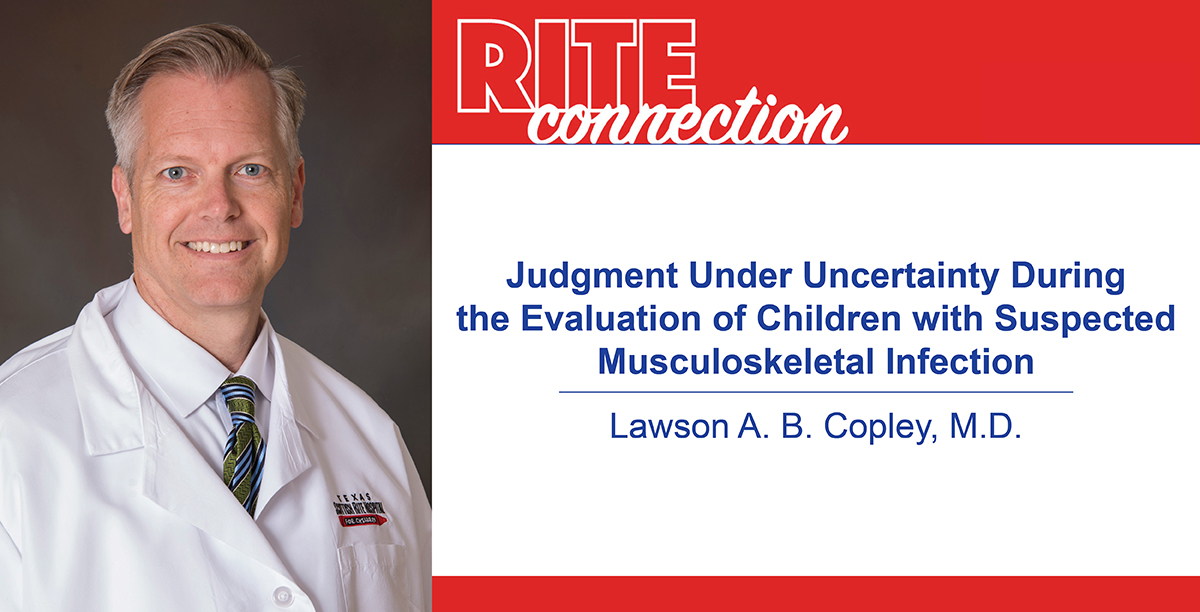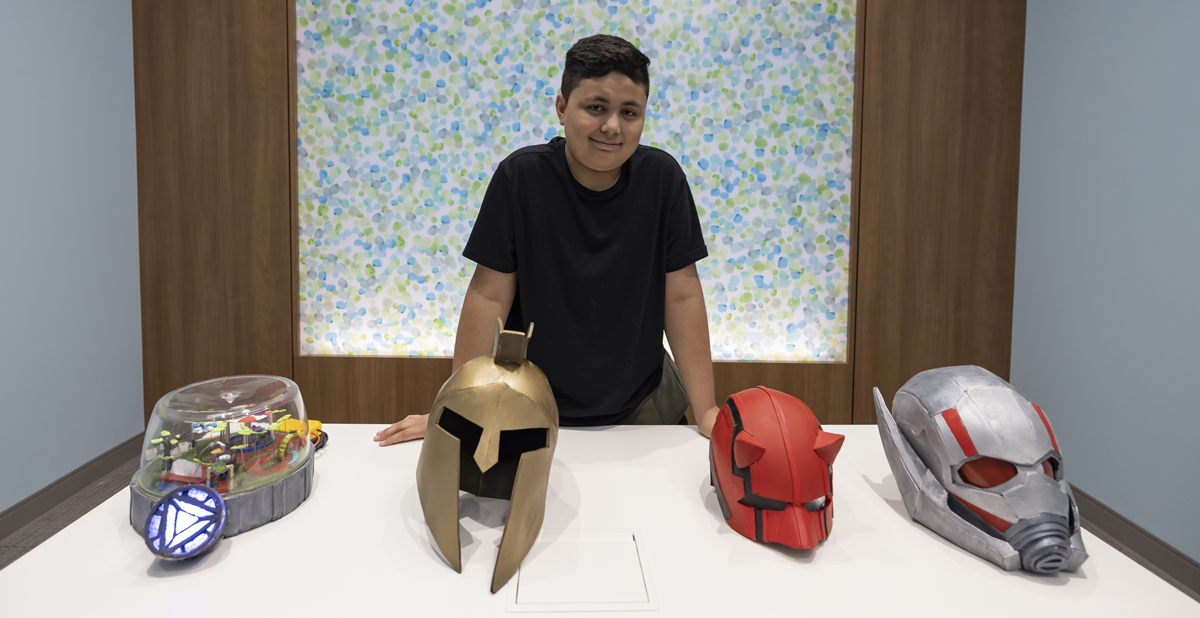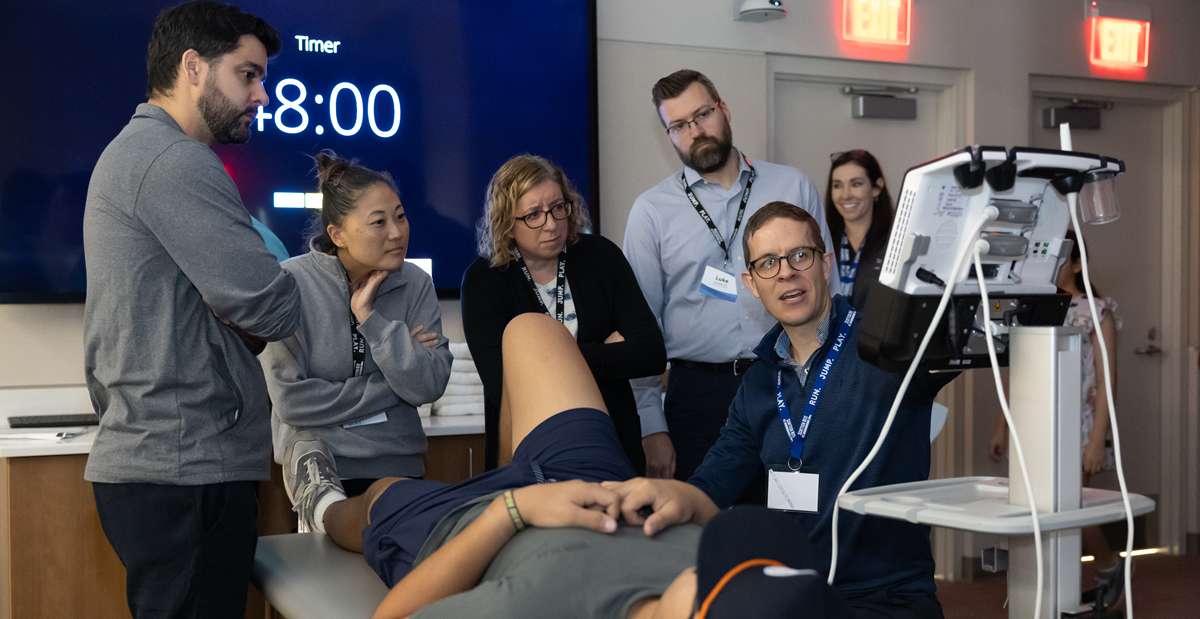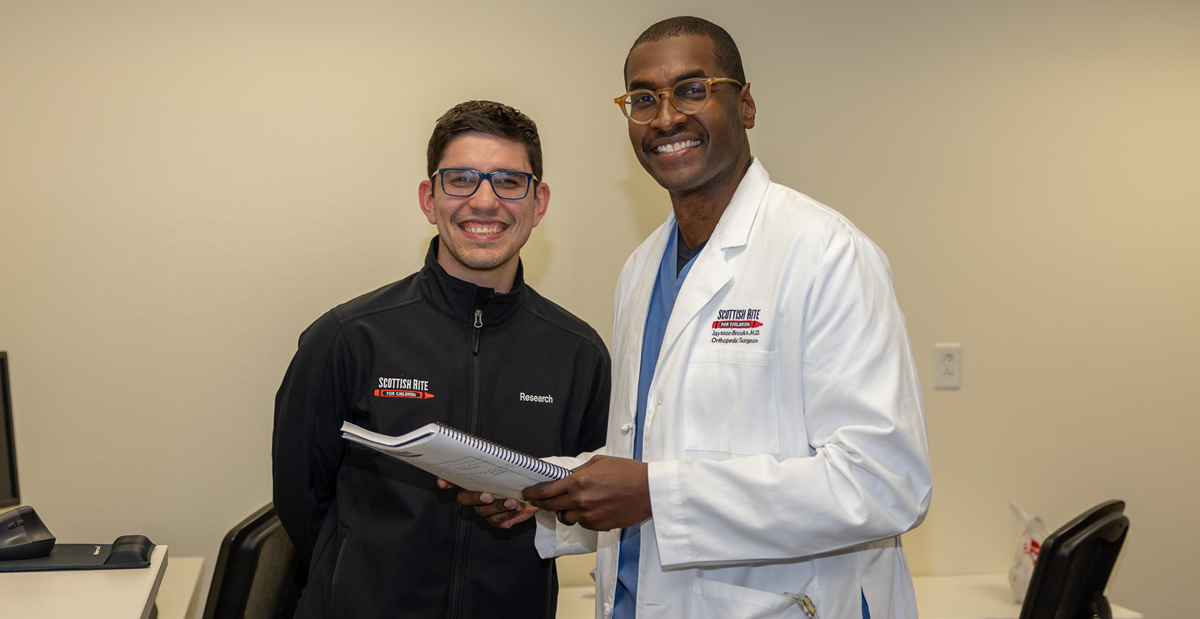
Nov 15, 2019 / General News
Judgment Under Uncertainty During the Evaluation of Children with Suspected Musculoskeletal Infection
Key messages from a presentation by staff orthopedist Lawson A.B. Copley, M.D., at Coffee, Kids and Sports Medicine.
Watch the lecture
Print the PDF
There has been a dramatic increase in musculoskeletal infections (MSI) in children in the last twenty years. Copley recognized this as a problem in North Texas in 2002 and says the climate in this region plays some role in the increased incidence here.
MSI is a collection of many conditions with similar presentations which can present on a broad spectrum of illness severity. Unfortunately, this often results in inaccurate or delayed diagnoses or referral for appropriate evaluation and care.
Copley encouraged participants to use caution in evaluating patients with possible MSI. In his experience, there are a handful of conditions that are likely diagnoses for children presenting with infectious symptoms. However, he emphasized that there are many other diagnoses that should not be ignored in the systematic evaluation of these children.
Watch the video to learn about what to expect and what not to expect with these more common conditions:
Though he warns it is tempting to over-simplify, Copley reiterates a few general thoughts based on his extensive work to improve patient-centered care and outcomes with this population:
Watch the lecture
Print the PDF
There has been a dramatic increase in musculoskeletal infections (MSI) in children in the last twenty years. Copley recognized this as a problem in North Texas in 2002 and says the climate in this region plays some role in the increased incidence here.
MSI is a collection of many conditions with similar presentations which can present on a broad spectrum of illness severity. Unfortunately, this often results in inaccurate or delayed diagnoses or referral for appropriate evaluation and care.
Copley encouraged participants to use caution in evaluating patients with possible MSI. In his experience, there are a handful of conditions that are likely diagnoses for children presenting with infectious symptoms. However, he emphasized that there are many other diagnoses that should not be ignored in the systematic evaluation of these children.
Watch the video to learn about what to expect and what not to expect with these more common conditions:
- Osteomyelitis
- Septic arthritis
- Transient synovitis
- Pyomyositis
- Complex skin and skin structure infections
Though he warns it is tempting to over-simplify, Copley reiterates a few general thoughts based on his extensive work to improve patient-centered care and outcomes with this population:
- History is helpful – was there trauma?
- Physical exam – is there sensitivity to palpation or joint range of motion?
- Collect labs before administering antibiotics.
- Clindamycin should be considered until the culture results are available direct antibiotic selection.
- X-ray of the focal area of concern identified during history and physical exam - many conditions can be properly managed with limited imaging (fewer X-rays and MRI sequences, contrast rarely needed).



